Tokyo Itinerary: What to eat, do and see in three days!
Caution: Tokyo’s Tsukiji Market is where you will have a taste of the world’s best sashimi and there’s absolutely no turning back. It has ruined sashimi everywhere else in the world for us…
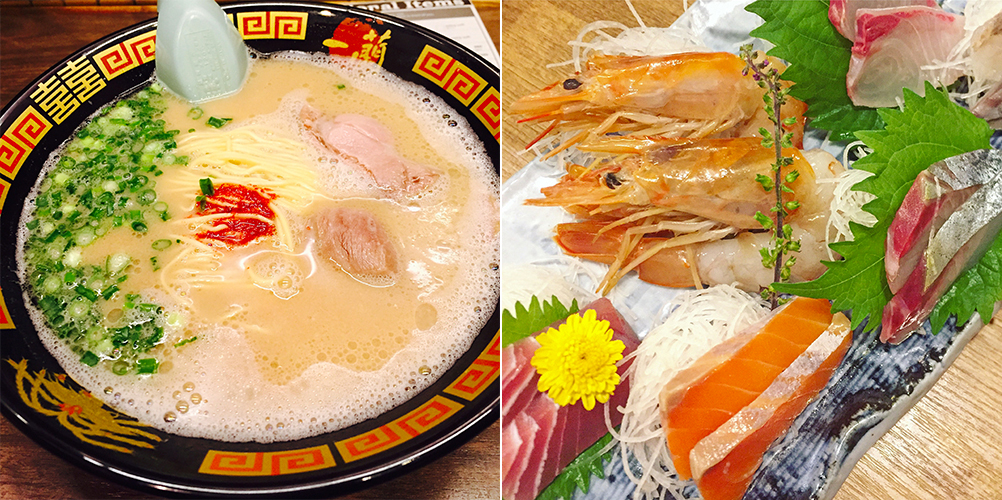 But yes, Tokyo is EVERY gourmand’s dream holiday destination.
But yes, Tokyo is EVERY gourmand’s dream holiday destination.
Why foodies should visit: Food in Tokyo is unrivalled. To date, the capital of Japan boasts the most number of Michelin-starred restaurants in the world – and no other cities have managed to snag that title away for the past decade. And the Japanese chefs aren’t even trying! In fact, a Japanese chef once famously turned down the highly sought-after Michelin star.
Tipping is frowned upon: Precision and perfection are deeply ingrained in the Japanese culture; the Japanese take immense pride in everything they do. Hence, tipping might be seen as an insult as the Japanese do not think that their strive for excellence is anything out of the ordinary. In addition, slurping your ramen loudly is considered respectful, so go on and make some noise. P.s. These are just a few examples of Japan’s many unconventional social etiquettes.
Chefs take years to hone their skills: Sushi masters undergo years of gruelling training, before they can prove themselves to be worthy of the itamae title. If you’ve watched Jiro Dreams of Sushi before, the interviews revealed that apprentices have to work at least 10 years before they get to learn to cook eggs at the legendary Sukiyabashi Jiro. The documentary seriously gives us the chills. Unfortunately, we have yet to dine at the world-famous three-Michelin-star eatery.
Visit Tokyo for its architecture: Food aside, Tokyo is too home to a myriad of traditional architecture and ultramodern kick-ass designs. The juxtaposition between the old and new infrastructures is beyond glaring. It’s not hard to see why foodies and photographers are obsessed with this multifaceted metropolis.
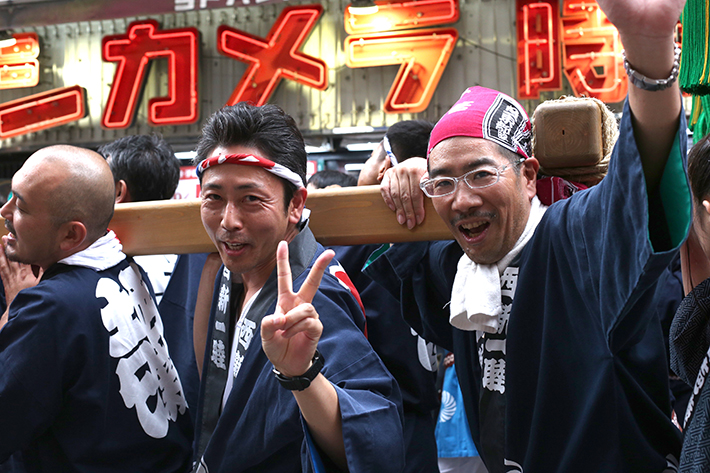 The Japanese are shy, but helpful: While most Japanese do not speak English, they are definitely the kindest Asians we have ever met. We encountered several issues during our trip and every passerby we randomly approached have without fail tried their best to help us despite the language barrier. It can’t be a coincidence that all these locals actually went out of their way on their own accord to assist us.
The Japanese are shy, but helpful: While most Japanese do not speak English, they are definitely the kindest Asians we have ever met. We encountered several issues during our trip and every passerby we randomly approached have without fail tried their best to help us despite the language barrier. It can’t be a coincidence that all these locals actually went out of their way on their own accord to assist us.
Important travel tips for Tokyo
Before booking your flight to Tokyo: Note that there are two major international airports, namely Haneda Airport and Narita Airport. These two airports are VERY FAR from each other and you can take up to two hours via public transportation to get from one place to another.
Think twice about cabbing: Tokyo’s taxi rides are one of the most expensive in the world and a ride could set you back hundreds of dollars. Take the Tokyo Metro instead, it’s efficient – albeit confusing – and a lot more affordable.
SIM cards purchased directly from Tokyo’s airports are VERY pricey: According to Tokyo Cheapo, SIM cards in Tokyo start from ¥2,000 (aka approximately S$24.90) which is too costly in my opinion. Our personal advice would be to get a SIM card or wifi router from Klook, starting from only S$4 a day – and it connects up to 10 devices at once!
Day One
1. Seryna – Savour Award-Winning Authentic Kobe Beef Shabu Shabu
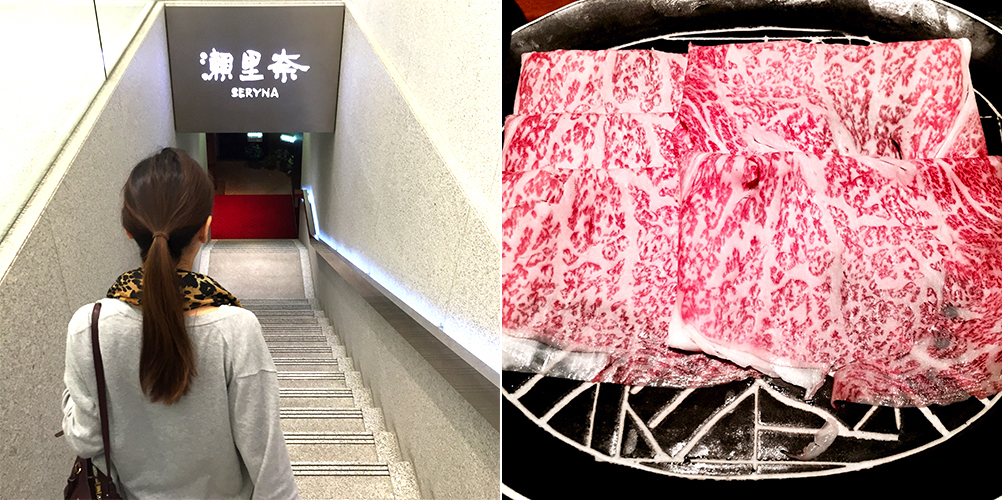 Seryna is one of the few restaurants in the world that serves authentic Kobe Beef. The Kobe Beef sold here has been certified by Kobe Beef Marketing and Distribution Promotion Association and you can request for a 10-digit individual ID number to trace its pedigree and confirm its authenticity. Prices here are steep, but it’s more affordable during lunchtime!
Seryna is one of the few restaurants in the world that serves authentic Kobe Beef. The Kobe Beef sold here has been certified by Kobe Beef Marketing and Distribution Promotion Association and you can request for a 10-digit individual ID number to trace its pedigree and confirm its authenticity. Prices here are steep, but it’s more affordable during lunchtime!
We made an online reservation via the official website prior to our trip as we heard that Seryna is extremely popular. There are three outlets across Tokyo, and we visited the one located in the basement of Ginza’s Tiffany Building.
Upon arrival, we were greeted by Japanese ladies donned in traditional kimonos. The menu features a variety of meats and seafood, but it was the Kobe Beef that stole all the limelight.
Tip: Drop by during lunch hours for a more affordable menu!
Address: Ginza Tiffany Bldg. B1, 2-7-17, Ginza, Chuo-ku, Tokyo, Japan
Nearest Subway: Ginza-itchōme Station (a 2-min walk) or Ginza Station (a 3-min walk)
2. Millenium Mitsui Garden Hotel Tokyo – Located in the heart of Ginza
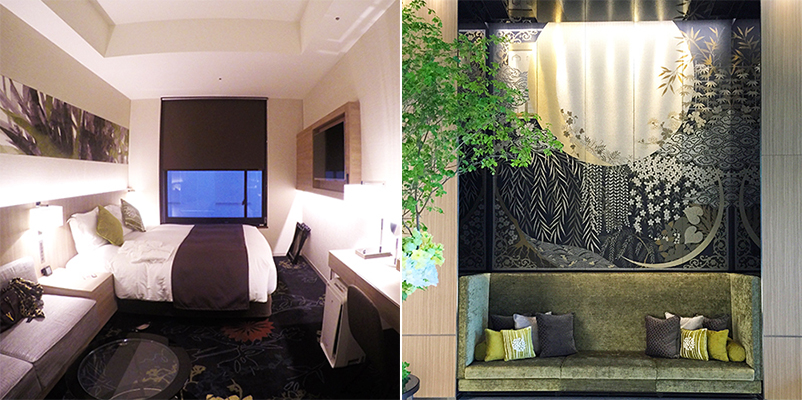 We stayed at Millenium Mitsui Garden Hotel Tokyo for its comfort and convenience. The 4-star hotel is strategically located in Ginza; it is located right outside Higashi Ginza Station’s Exit A1 and is within a 2-minute walk to Ginza Station. The Tokyo Metro was our main mode of transport and having two metro stations outside the hotel made travelling a hell lot easier.
We stayed at Millenium Mitsui Garden Hotel Tokyo for its comfort and convenience. The 4-star hotel is strategically located in Ginza; it is located right outside Higashi Ginza Station’s Exit A1 and is within a 2-minute walk to Ginza Station. The Tokyo Metro was our main mode of transport and having two metro stations outside the hotel made travelling a hell lot easier.
The hotel is also within a 10-minute walk to Tsukiji Fish Market. If you want to catch the famous tuna auction at Tsukiji Fish Market, then you MUST stay at a nearby hotel. The tuna auction is held at the most unearthly hours and not everyone is guaranteed a spot! Unless you want to spend the unnecessary monies cabbing to and fro – which we would strongly advise you not to.
Last but not least, complimentary wifi is available to all hotel guests at no additional costs.
Tip: It is located directly outside Higashi Ginza Station’s Exit A1
Address: 5-11-1 Ginza, Chuo-ku, Tokyo 104-0061
Nearest Subway: Higashi Ginza Station (directly beside) or Ginza Station (a 3-min walk)
3. Ginza – Remember To Visit The World’s Largest UniQlo
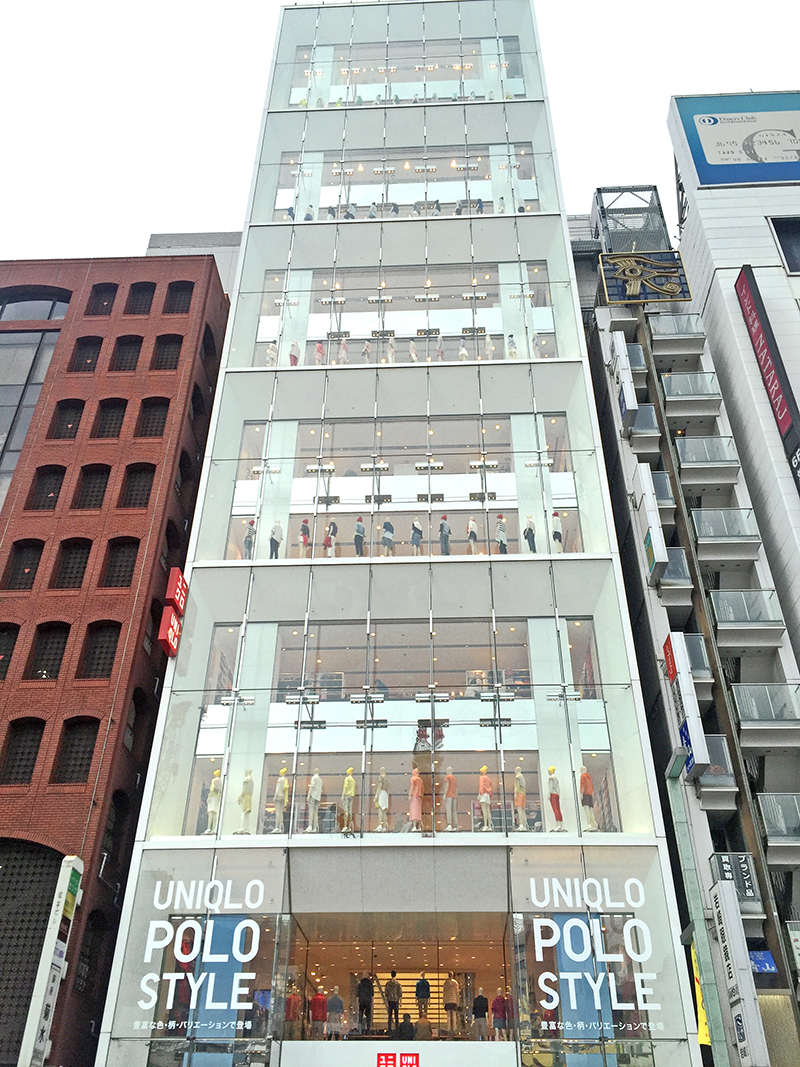 The sheer number of department stores and malls in Ginza is indeed overwhelming. No wonder people shop till they drop here.
The sheer number of department stores and malls in Ginza is indeed overwhelming. No wonder people shop till they drop here.
But if shopping isn’t your cup of tea, we suggest you roam around Ginza anyway and marvel at the swanky district’s magnificent architecture.
There are a few buildings that design buffs would be interested in checking out, namely Ginza Kabukiza, Louis Vuitton Ginza Matsuya Ginza, Maison Hermès Ginza, Mikimoto Ginza 2 and lo and behold… The world’s largest UniQlo! The retail store spans across 4,959 square meters and 12 floors.
Nearest Subway: Ginza
4. Shibuya – Join The World’s Busiest Pedestrian Crossing
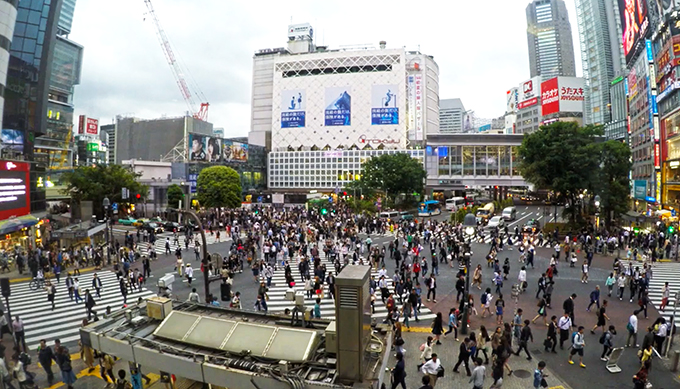 The Shibuya Crossing is one of Tokyo’s most iconic attractions. It is the busiest pedestrian crossing in the world and up to 2,500 people cross this intersection during peak hours. You would expect it to be chaotic – but the mass movement is strangely organised.
The Shibuya Crossing is one of Tokyo’s most iconic attractions. It is the busiest pedestrian crossing in the world and up to 2,500 people cross this intersection during peak hours. You would expect it to be chaotic – but the mass movement is strangely organised.
Want to catch this systematic action from a bird’s eye view? Then head to Tsutaya building’s Starbucks (2nd storey). The glass window at the global coffee chain is however… Packed with photographers and their tripods. Oh do take note that flying a drone in Shibuya is prohibited.
Tip: Take the Tokyo Metro to Shibuya Station and head towards the Hachiko Exit
Nearest Subway: Shibuya Station (a 4-min walk)
5. Ichiran Ramen – Order a delicious ramen via a vending machine
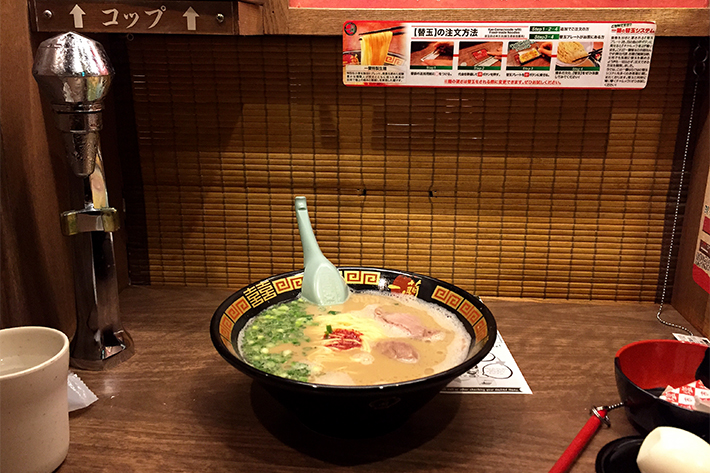
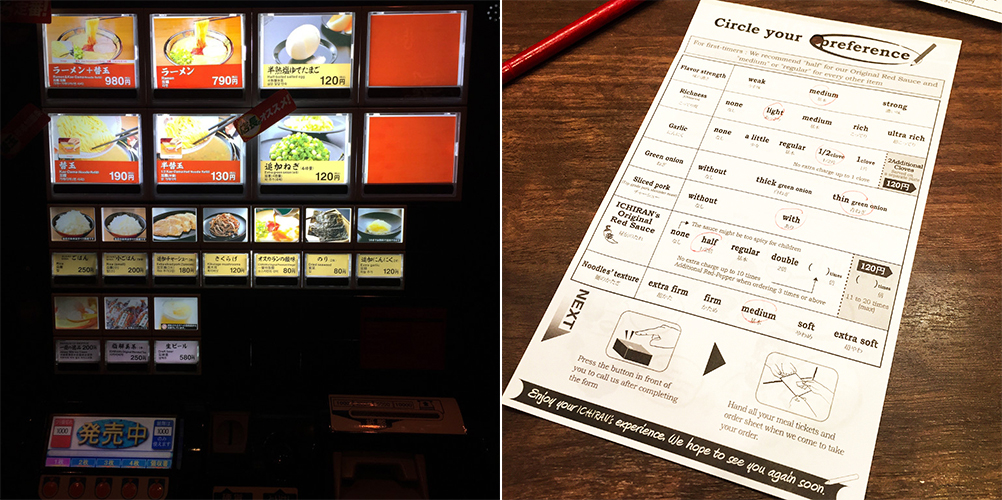 Don’t dismiss Ichiran Ramen just because it’s a ramen chain. It is hands down our favourite ramen eatery and up to this point in time, we haven’t had any better tonkotsu ramen! We have eaten countless bowls of Ichiran Ramen in Hong Kong, but we will never forget eating it for the first time in Shibuya.
Don’t dismiss Ichiran Ramen just because it’s a ramen chain. It is hands down our favourite ramen eatery and up to this point in time, we haven’t had any better tonkotsu ramen! We have eaten countless bowls of Ichiran Ramen in Hong Kong, but we will never forget eating it for the first time in Shibuya.
Like many other non-Japanese customers, we were intrigued by the dining concept; orders are made via a vending machine and diners dine solo in wooden cubicles. Select your preferred spice level and noodle texture etc on a form, then proceed to ring the button in front of you.
The tatami curtain in front of you will be unveiled and an aromatic ramen bowl will be presented. The dollop of red sauce – topped on handmade noodles – consists of 30 over spices. We really hope Ichiran Ramen will open an outlet in Singapore so we can eat it every week…
Tip: The ramen restaurant is open 24/7 daily
Address: 1 Chome-22-7 Jinnan, Shibuya, Tokyo, Japan
Nearest Subway: Shibuya Station (a 5-min walk)
6. High Five – Ranked as one of the world’s 50 best bars
We had a tough time locating the world’s 23rd best bar. But when we finally did, we felt like we had trespassed private property. Bar High Five – situated in a unassuming office building – is awfully small. Given its obscure location, it is evident that nobody is here by chance.
For the classic experience, order whisky on the rocks. Watch in awe as founder Hidetsugu Ueno hand carves a stunning ice block into a 15-faceted diamond in just under two minutes!
Tip: There are rules to abide! Refer to the official website for full details.
Address: Efflore Ginza5 Bldg. BF 5-4-15 Ginza Chuo-ward Tokyo 104-0061 Japan
Nearest Subway: Ginza Station (a 4-min walk)
Day Two
7. Tsukiji Fish Market – Sacrifice sleep and watch the tuna auction
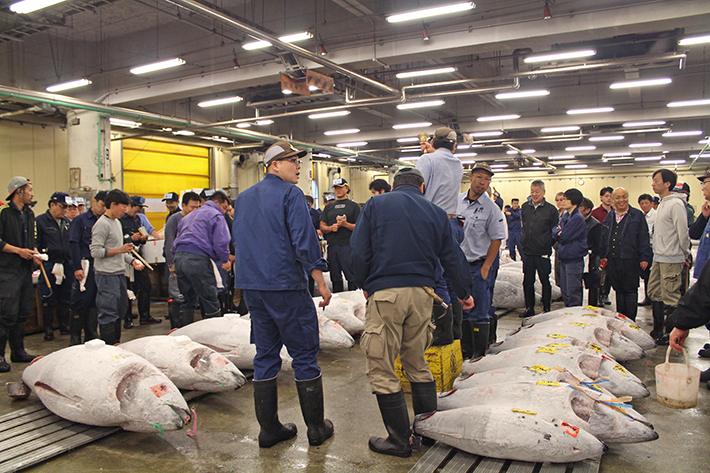
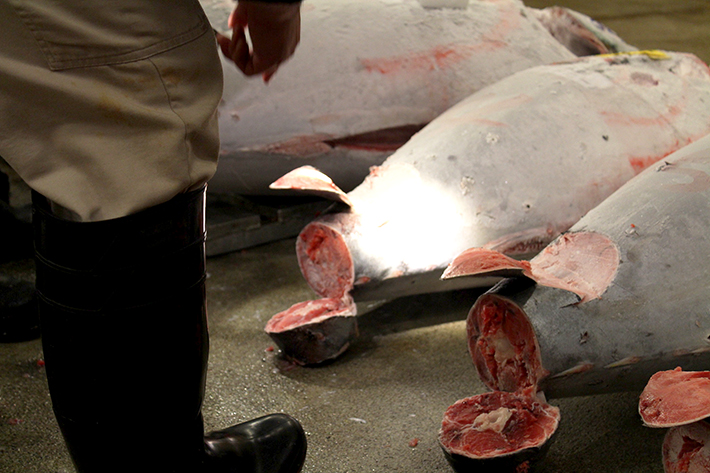 Tsukiji Fish Market was set to move last year, but the shift was delayed and confusion ensued. While the move has been confirmed (again), no official date has been given. However, local Japanese media cited May 2018 as a possible period. If you are visiting the 82-year-old fish market, do make it a point to attend the tuna auction. It might be your last opportunity to do so!
Tsukiji Fish Market was set to move last year, but the shift was delayed and confusion ensued. While the move has been confirmed (again), no official date has been given. However, local Japanese media cited May 2018 as a possible period. If you are visiting the 82-year-old fish market, do make it a point to attend the tuna auction. It might be your last opportunity to do so!
The bidding process was an out-of-the-world experience that I’ll never forget. But bear in mind that catching the tuna auction is not an easy feat. You have to give up on some beauty sleep; there is a cap at 120 visitors and they are divided into two batches. We started queuing at 3:30am and were allocated to the second batch. Can you imagine how early the other visitors were?!
While this free activity is a top-rated attraction in Tokyo, it might not be for everyone. Some people do not like sacrificing hours of their sleep just to catch a 30-minute auction. P.s. Do read my published article ‘5 Things You Need To Know Before Visiting Tsukiji Fish Market’ here.
Tip: Note that the tuna auction isn’t available every day! Check the official site for the schedule.
Address: 5 Chome-2-1 Tsukiji, Chuo, Tokyo 104-0045, Japan
Nearest Subway: Tsukiji Shijo Station (a 5-min walk) or Tsukiji Station (a 5-min walk)
8. Yamazaki – Superbly fresh sashimi, best we ever had
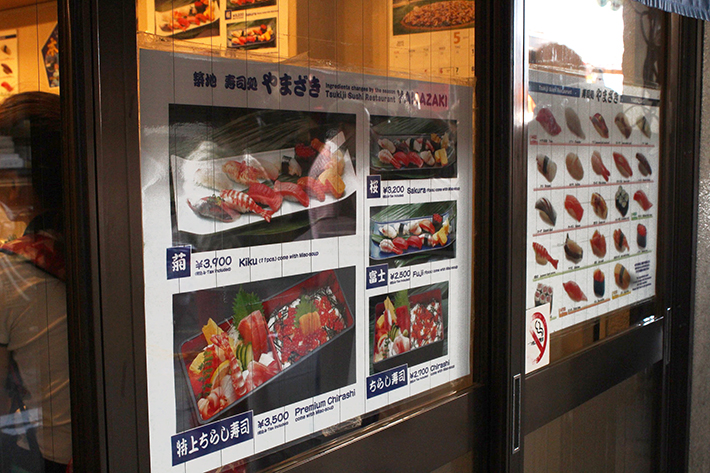
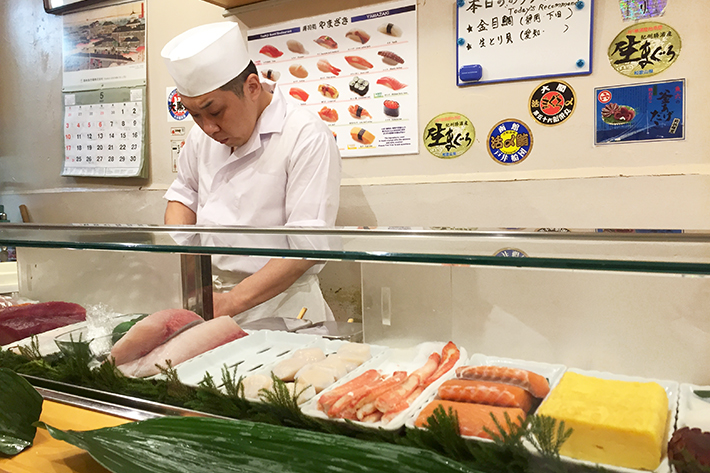 Every day, up to 42,000 people visit Tsukiji Fish Market. We were hoping to score a seat at the highly raved about Sushi Dai, but the eager foodies had made it impossible – they actually started queuing for Sushi Dai at 3:30am! We ended up having breakfast at a hole-in-the-wall sushi eatery Yamazaki and it was the best breakfast in my life.
Every day, up to 42,000 people visit Tsukiji Fish Market. We were hoping to score a seat at the highly raved about Sushi Dai, but the eager foodies had made it impossible – they actually started queuing for Sushi Dai at 3:30am! We ended up having breakfast at a hole-in-the-wall sushi eatery Yamazaki and it was the best breakfast in my life.
I had the ¥3900 Kiku Set which consists of 11 exquisite sushi. The glistening ika, sweet fluffy tamago omelette, creamy uni and luscious salmon almost sent me to tears. One word: Heavenly.
Tip: Yamazaki is only open from 5:30am to 2:00pm
Address: 5 Chome-2-1 Tsukiji, Chūō-ku, Tōkyō-to 104-0045, Japan
Nearest Subway: Tsukiji Shijo Station (a 2-min walk) or Tsukiji Station (a 8-min walk)
9. Honmura An – Lunch at specialty soba restaurant
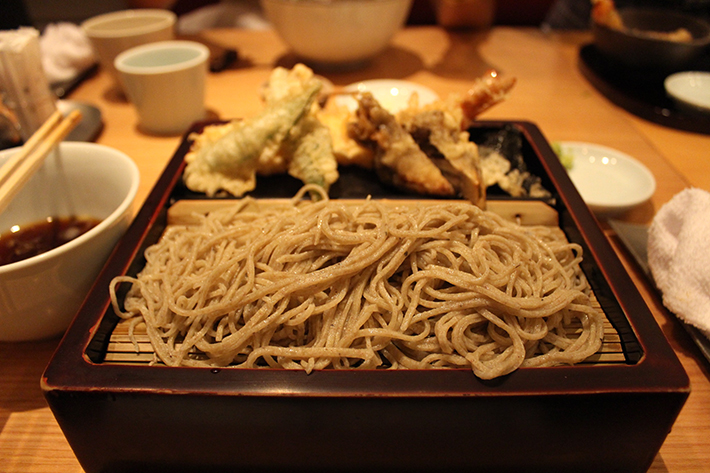 When Koichi Kobari closed down Manhattan’s Honmura An for good in 2007, he left a trail of broken hearts. But that was not the end. The Japanese chef returned to Tokyo and opened Honmura An in Roppongi.
When Koichi Kobari closed down Manhattan’s Honmura An for good in 2007, he left a trail of broken hearts. But that was not the end. The Japanese chef returned to Tokyo and opened Honmura An in Roppongi.
Celebrities frequent the fabled specialty soba restaurant – and Yoko Ono is reportedly a fan of the soba noodles! Reservations are mandatory due to its popularity; it’s unsurprising to see New Yorkers dining in here too. Honmura An has actually been serving handmade buckwheat noodles since 1924 and prices start from ¥756 for a dish of plain noodles with cold dipping soup.
Fortunately, prices are kept affordable despite the brand’s global acclaim. Besides the signature soba, Honmura An also serves a variety of Japanese classic dishes. Check out the menu here.
Tip: You can use Gurunavi Conceirge to make an online booking
Address: 7-14-18 Roppongi, Minato-ku Tokyo, Japan
Nearest Subway: Roppongi Station (a 2-min walk)
10. The National Art Center, Tokyo – Awesome collection of artworks
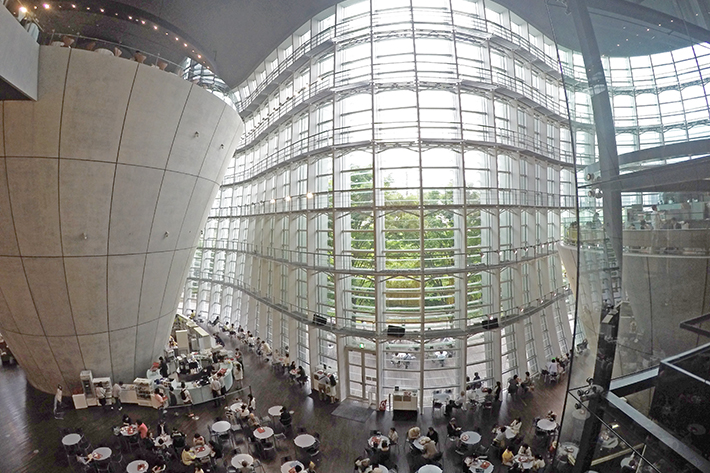 Spanning across 14,000 square meters, The National Art Center, Tokyo (NACT) is one of Japan’s biggest museums. Exhibitions are on rotation and there is actually no permanent display.
Spanning across 14,000 square meters, The National Art Center, Tokyo (NACT) is one of Japan’s biggest museums. Exhibitions are on rotation and there is actually no permanent display.
While admission fee to the building is complimentary, entrance fees do apply for the various galleries. While you might not wish to pay to enter the exhibitions, it is still worth visiting the infrastructure for its wave-like glass façade and gigantic inverted cones.
Tip: The National Art Center, Tokyo is closed every Tuesday
Address: 7 Chome-22-2 Roppongi, Minato, Tokyo 106-8558, Japan
Nearest Subway: Roppongi Station (a 8-min walk)
11. Roppongi – More than just a nightlife district
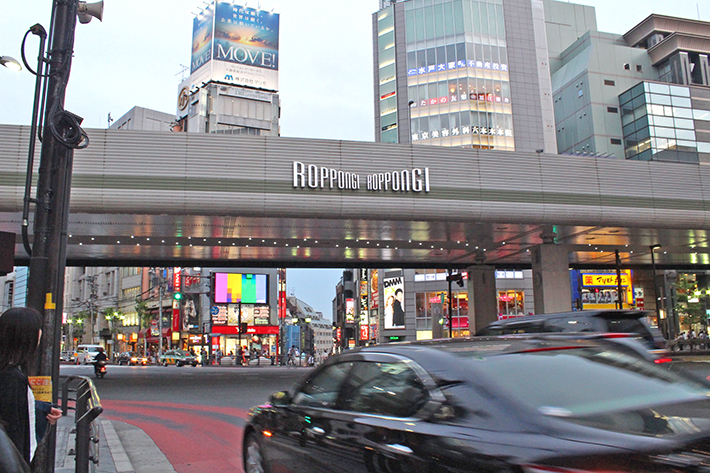
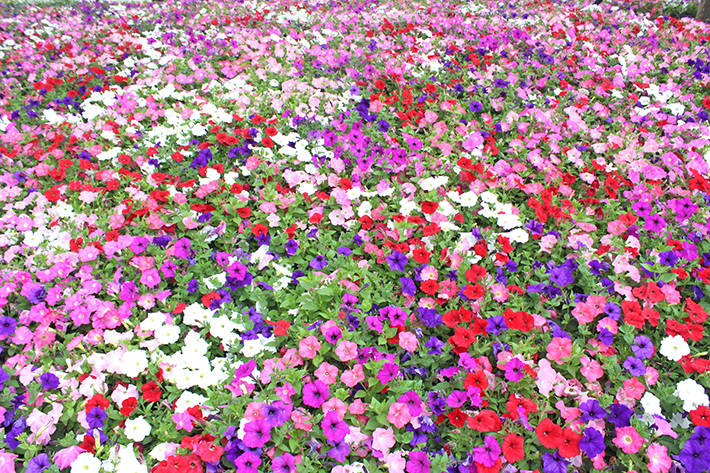 There are aplenty bars, cafes, restaurants and shops in Roppongi. The district is renowned for its nightlife, but is worth exploring in daytime. If you want to sightsee, consider these Roppongi attractions i.e. Tokyo City View And Sky Deck, Nogi Shrine, Mohri Garden and Myozenji Temple.
There are aplenty bars, cafes, restaurants and shops in Roppongi. The district is renowned for its nightlife, but is worth exploring in daytime. If you want to sightsee, consider these Roppongi attractions i.e. Tokyo City View And Sky Deck, Nogi Shrine, Mohri Garden and Myozenji Temple.
Nearest Subway: Roppongi
12. Aobaya Ginza – Amazing Shabu-shabu and Sukiyaki Wagyu Beef
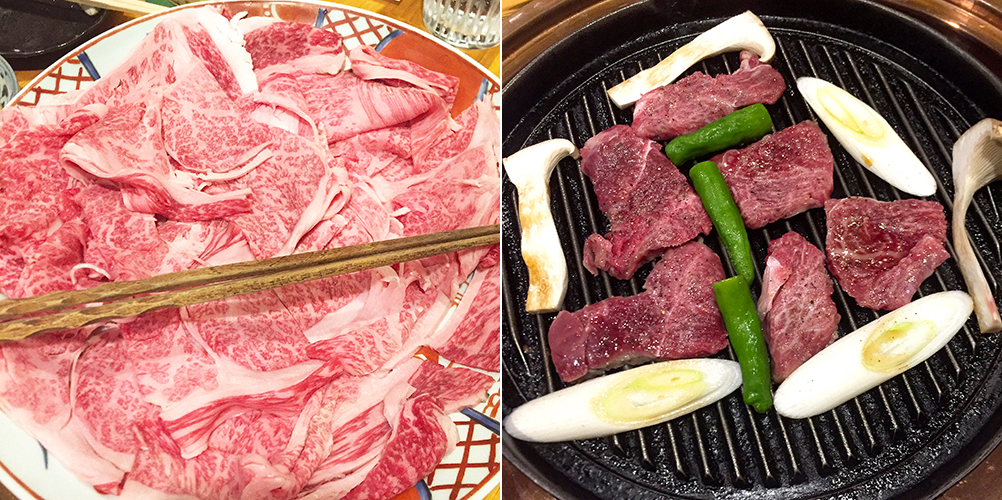 Located on the third floor of a nondescript building in the Ginza district, Aobaya Ginza is truly a local gem. The Japanese steamboat restaurant serves divine meat cooked Shabu-shabu and Sukiyaki style. The melt-in-your-mouth tender Matsusaka beef, Kobe beef and Saga Beef is seriously worth making a special trip for. Google the restaurant and you would notice that there are hardly any English reviews. But we believe in time to come, this place will be swamped.
Located on the third floor of a nondescript building in the Ginza district, Aobaya Ginza is truly a local gem. The Japanese steamboat restaurant serves divine meat cooked Shabu-shabu and Sukiyaki style. The melt-in-your-mouth tender Matsusaka beef, Kobe beef and Saga Beef is seriously worth making a special trip for. Google the restaurant and you would notice that there are hardly any English reviews. But we believe in time to come, this place will be swamped.
Prices range from ¥2,500 for Black Pork Pine Course to ¥9,200 for a Saturn Course Special Matsusaka Meat. The former set comprises 120-gram of black pork from Kagoshima prefecture, vegetables, Kisimen noodles and dessert, while the latter consists of 150-gram salt-grilled Matsusaka beef, sashimi, vegetables, Kisimen noodles and dessert. Incredibly value for money!
Address: 6-2-6 Ginza | West Bldg. 3F, Chuo 104-0061
Nearest Subway: Yūrakuchō Station (a 6-min walk)
13. Skylounge Stellar Garden – Stunning view of Tokyo Tower
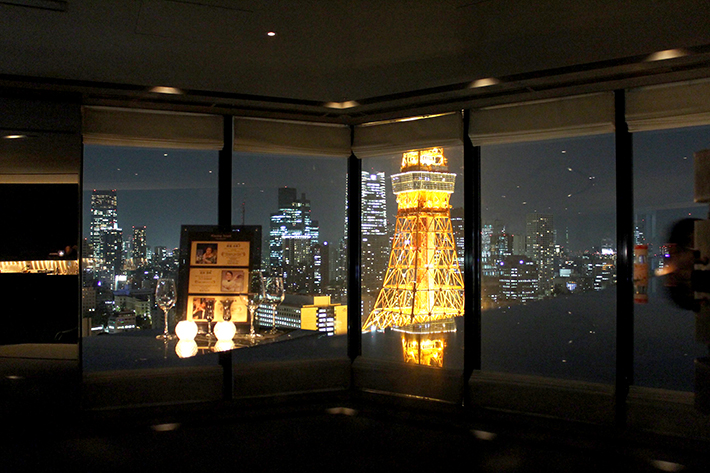
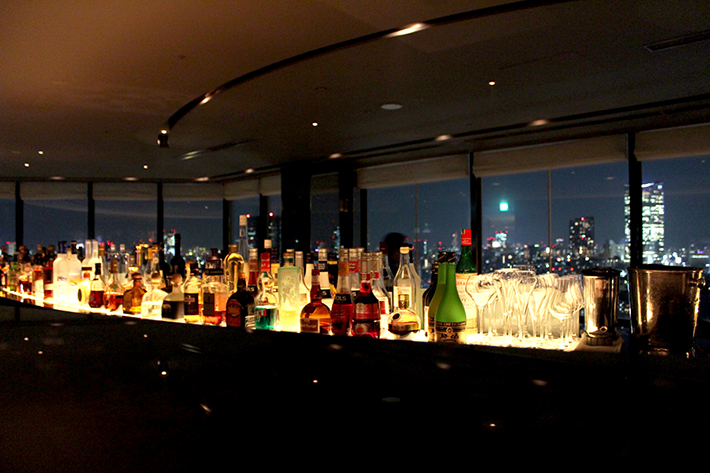 For an alternative — but up-close — view of Tokyo Tower, visit Skylounge Stellar Garden. The ritzy bar is located on the 33rd floor of Prince Park Tower Hotel. Should alcohol not be your kind of thing, you can also drop by in the day for some tea and cake. P.s. We did a walk in and were allocated seats by the bar counter. Apparently tables by the glass windows would incur an additional table charge as you’re essentially paying for the unobstructed panoramic view!
For an alternative — but up-close — view of Tokyo Tower, visit Skylounge Stellar Garden. The ritzy bar is located on the 33rd floor of Prince Park Tower Hotel. Should alcohol not be your kind of thing, you can also drop by in the day for some tea and cake. P.s. We did a walk in and were allocated seats by the bar counter. Apparently tables by the glass windows would incur an additional table charge as you’re essentially paying for the unobstructed panoramic view!
Address: 4-8-1 Shibakoen, Minato 105-8563, Tokyo Prefecture
Nearest Subway: Shibakoen Station (a 5-min walk)
Day Three
14. Aoyama Flower Market – Brunch at a gorgeous garden-themed cafe
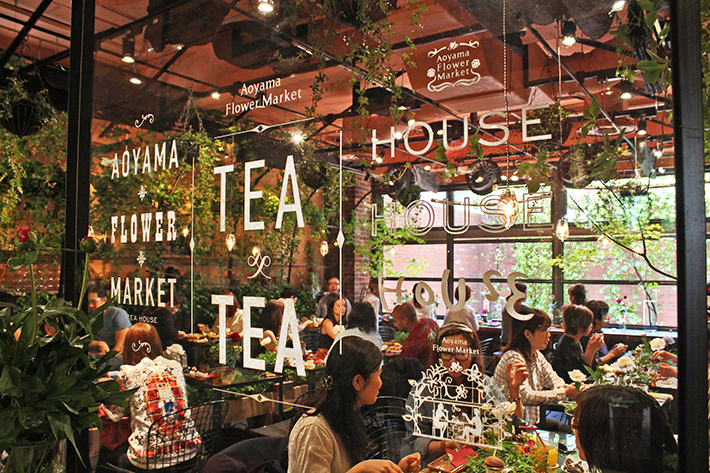
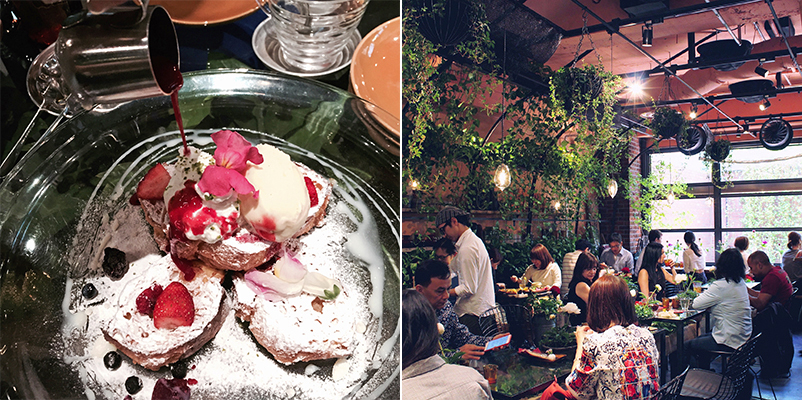 Aoyama Flower Market is situated directly across Omote-sando Station Exit A4. The beautiful flower-themed cafe is only open for business at 11:00am, but a line is already formed before that. If you arrive any time after 12pm, do expect to wait for at least half an hour to get a table. The vast number of flowers and plants used to decorate the café blew us away. There are even real plants underneath the transparent glass tables! A lovely floral scent permeated the cafe. Love it.
Aoyama Flower Market is situated directly across Omote-sando Station Exit A4. The beautiful flower-themed cafe is only open for business at 11:00am, but a line is already formed before that. If you arrive any time after 12pm, do expect to wait for at least half an hour to get a table. The vast number of flowers and plants used to decorate the café blew us away. There are even real plants underneath the transparent glass tables! A lovely floral scent permeated the cafe. Love it.
The beverage menu highlights a refreshing selection of fruity, floral and herbal teas. If you can only order one dish, then it would have to be the Flower French Toast. Not sure if it was our lucky day, but we were each gifted a stalk of rose at the end of our meal. Such generous and heartwarming gestures that we will never forget. There are currently three Aoyama Flower Market outlets, but the one at Omote-sando is Aoyama Flower Market’s flagship store.
Tip: Order the Flower French Toast
Address: 5-1-2 Minamiaoyama, Shibuya, Tokyo Prefecture
Nearest Subway: Omote-sando Station Exit A4 (directly beside)
15. Meiji Shrine – A sacred tranquil site located near Harajuku Station
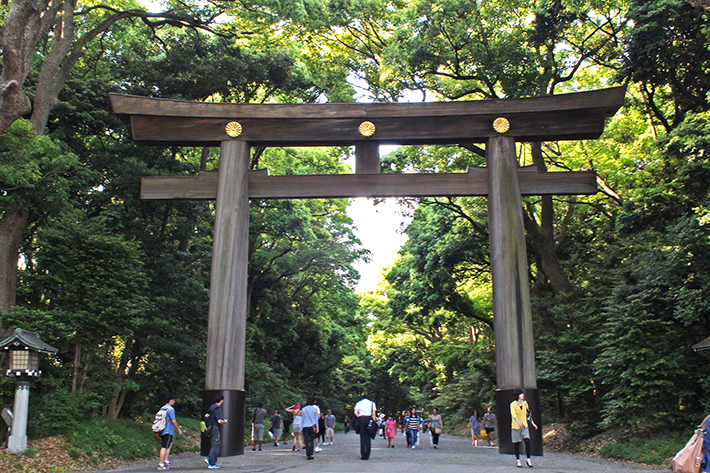
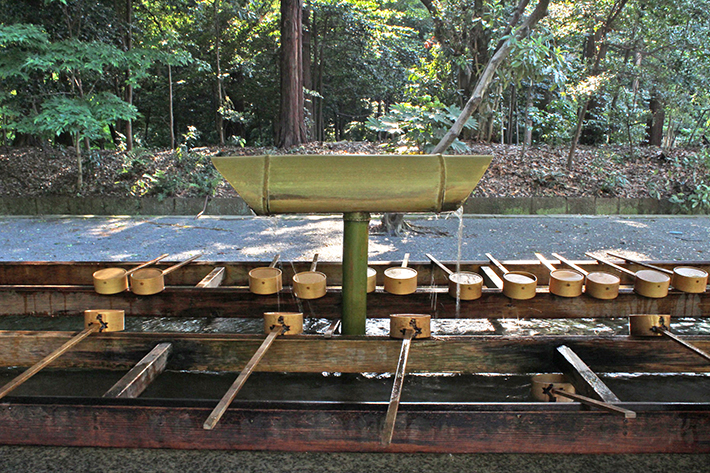 Meiji Shrine — also known as Meiji Jingu — was erected to commemorate the deaths of Emperor Meiji and the Empress Shoken. Over 13,000 Japanese had volunteered to build the grand shrine in 1915 and approximately 100,000 trees had been specially planted during the commencement of construction. The main building was destroyed in World War II, but was reconstructed in 1958.
Meiji Shrine — also known as Meiji Jingu — was erected to commemorate the deaths of Emperor Meiji and the Empress Shoken. Over 13,000 Japanese had volunteered to build the grand shrine in 1915 and approximately 100,000 trees had been specially planted during the commencement of construction. The main building was destroyed in World War II, but was reconstructed in 1958.
A huge torii gate – the largest of its kind in Japan – marks your entry into the Meiji Shrine complex. Today, visitors can still witness traditional Shinto ceremonies here. You can also write your wishes on a wooden plate and hang it on the tree for ¥500. While entrance to Meiji Shrine is free, charges of ¥500 apply for admission to the Treasure House and Inner Garden.
Tip: Before entering the main hall, wash your hands as a form of purification at the troughs.
Address: 1-1 Yoyogikamizonocho, Shibuya, Tokyo 151-8557, Japan
Nearest Subway: Harajuku Station (a 5-min walk)
16. Takeshita Street – Immerse in Harajuku’s eccentricity
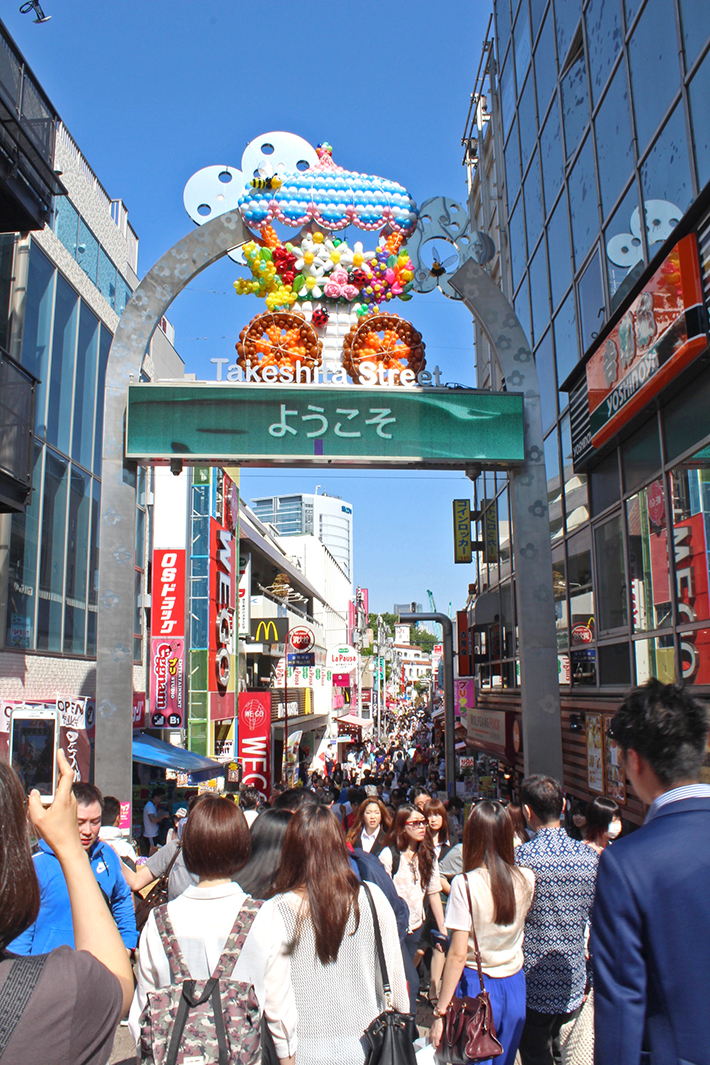
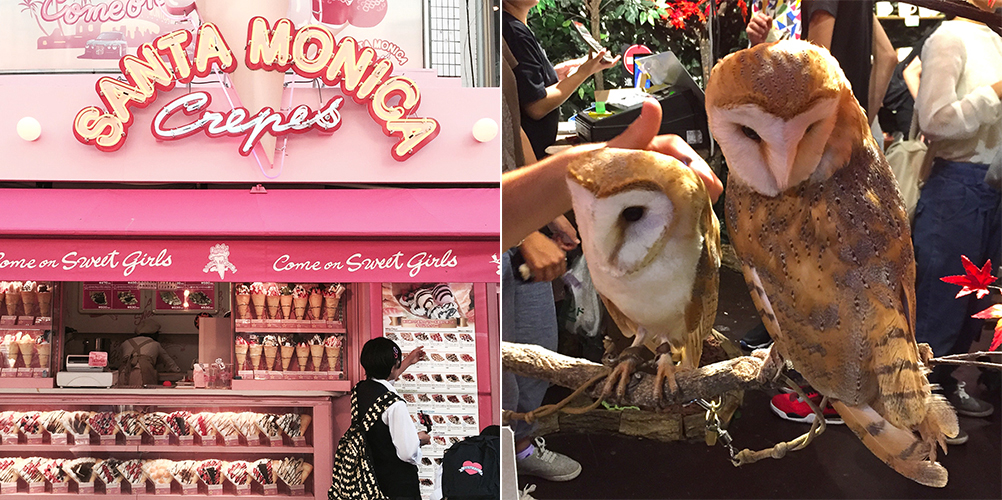 The 400-metre long Takeshita Street is the focal point of the Harajuku precinct. Fashion boutiques and cute cafes line the pedestrian-only street, but claustrophobes should proceed with caution: People are packed like sardines on Sundays. However, Sunday is the best day to see Harajuku’s cosplayers in full force!
The 400-metre long Takeshita Street is the focal point of the Harajuku precinct. Fashion boutiques and cute cafes line the pedestrian-only street, but claustrophobes should proceed with caution: People are packed like sardines on Sundays. However, Sunday is the best day to see Harajuku’s cosplayers in full force!
There are so many things to do at Takeshita Street! Indulge in a Japanese-style sweet crepe, take kawaii Purikura photos aka neoprints and stroke an owl… Tokyo is home to many bizarre themed cafes and the owl-themed cafe is one of them. Admittedly, it is a sad plight for these nocturnal creatures. The owls are tethered to perches and the living condition is far from ideal.
Are the owls tame? Not really. Most of them evidently didn’t like being stroked and one of the owls tried to attack us, but the chain held it back. True story. It’s a bird of prey after all.
Tip: Takeshita Street is very crowded on Sundays but is the best time to see Harajuku’s cosplayers
Address: Jingumae 1 chome, Shibuya 150-0001, Tokyo Prefecture
Nearest Subway: Harajuku Station (a 2-min walk)
17. Yurakucho Yakitori Alley – Dine with the local working class
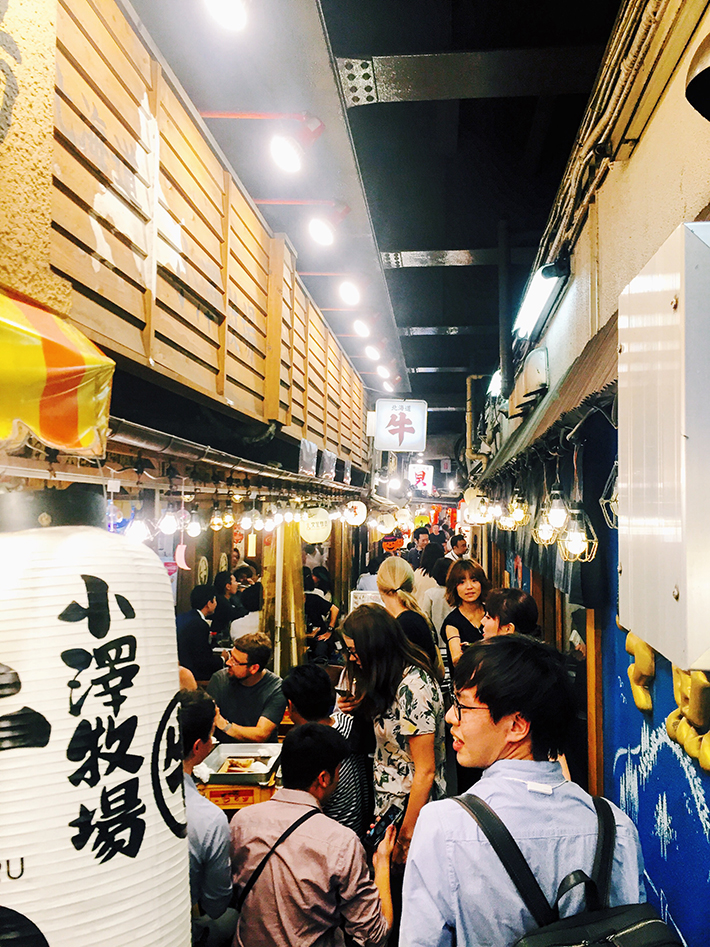
The underrated Yurakucho Yakitori Alley — located underneath the train tracks— is our favourite discovery in Tokyo. It is best to visit at night, where lanterns and overhanging lightbulbs light the narrow alleyway. Perhaps due to its dinginess, most tourists have avoided this vibrant gado-shita. The Japanese also probably assumed that this crammed and smoky dining experience isn’t worth promoting.
Open-air izakayas operate their businesses at both ends of the passageway and are frequented mostly by the working-class men. As its name implies, yakitori is most popular here. Feast on grilled meat skewers such as Torikawa (Chicken Skin), Tsukune (Chicken Meatballs) and Sunagimo (Chicken Skin). With barely any English words in sight, we knew we were at a local’s haunt.
Tip: Yurakucho Yakitori Alley is full of live on weekdays & significantly quiet on weekends
Address: 2 100 0006, 2 Chome-1-21 Yurakucho, Chiyoda, Tokyo 100-0006, Japan
Nearest Subway: Yūrakuchō Station (a 5-min walk) or Hibiya Station (a 5-min walk)
18. Isomaru Suisan – You must try their Kani Miso
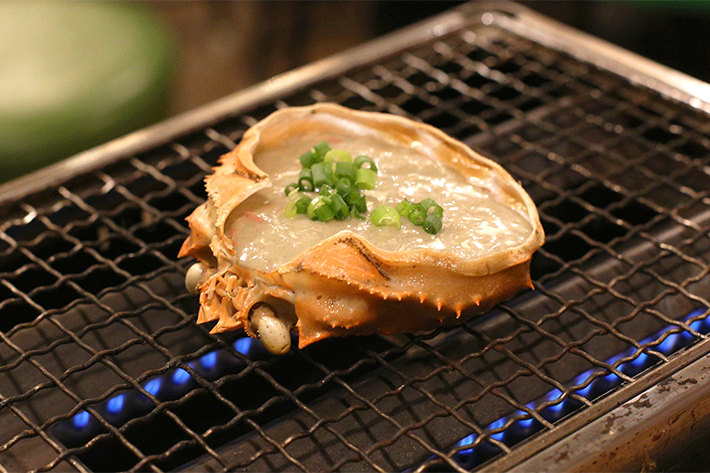 Isomaru Suisan is a Japanese seafood restaurant chain that opens 24/7 daily, hence making it perfect for a supper destination. The informal eatery is extremely affordable and unpretentious. While the sashimi we had at Isomaru Suisan failed to impress, there is this ONE spectacular dish that we cannot stop raving about: Kani Miso.
Isomaru Suisan is a Japanese seafood restaurant chain that opens 24/7 daily, hence making it perfect for a supper destination. The informal eatery is extremely affordable and unpretentious. While the sashimi we had at Isomaru Suisan failed to impress, there is this ONE spectacular dish that we cannot stop raving about: Kani Miso.
Crabmeat and miso paste are stuffed into hollow palm-size crab shells and garnished with chopped chives. The creamy and briny mixture is grilled to perfection over a metallic grill. Yum, umami at its finest! One Kani Miso is definitely not enough and now our only regret is not eating more.
By the way, our friend left his wallet at Isomaru Suisan and we miraculously retrieved it from the staff two hours after. Only such miracles happen in Japan.
Tip: Order their Kani Miso
Address: Japan, 100-0006 Tokyo, Chiyoda, Yurakucho, 1 Chome−2−10
Nearest Subway: Yūrakuchō Station (a 5-min walk) or Hibiya Station (a 5-min walk)
Here is a Google map of all the bars, cafes, restaurants & attractions featured in this 3D2N Tokyo Itinerary:
Download this 3D2N Tokyo Itinerary in pdf file here and word doc here.
Disclaimer: We last visited Tokyo, Japan in September 2016 & are not liable for any inaccuracies. Do email us at thekeepersmap@gmail.com if you spot any outdated information.
We’ve visited Tokyo three times so far, but it isn’t enough. We wish to live here for at least half a year & OD on the world’s best cuisine. Ramen, sashimi, wagyu and yakitori on repeat please. Please share with us your personal favourite eateries in Tokyo, we would love to hear from you!

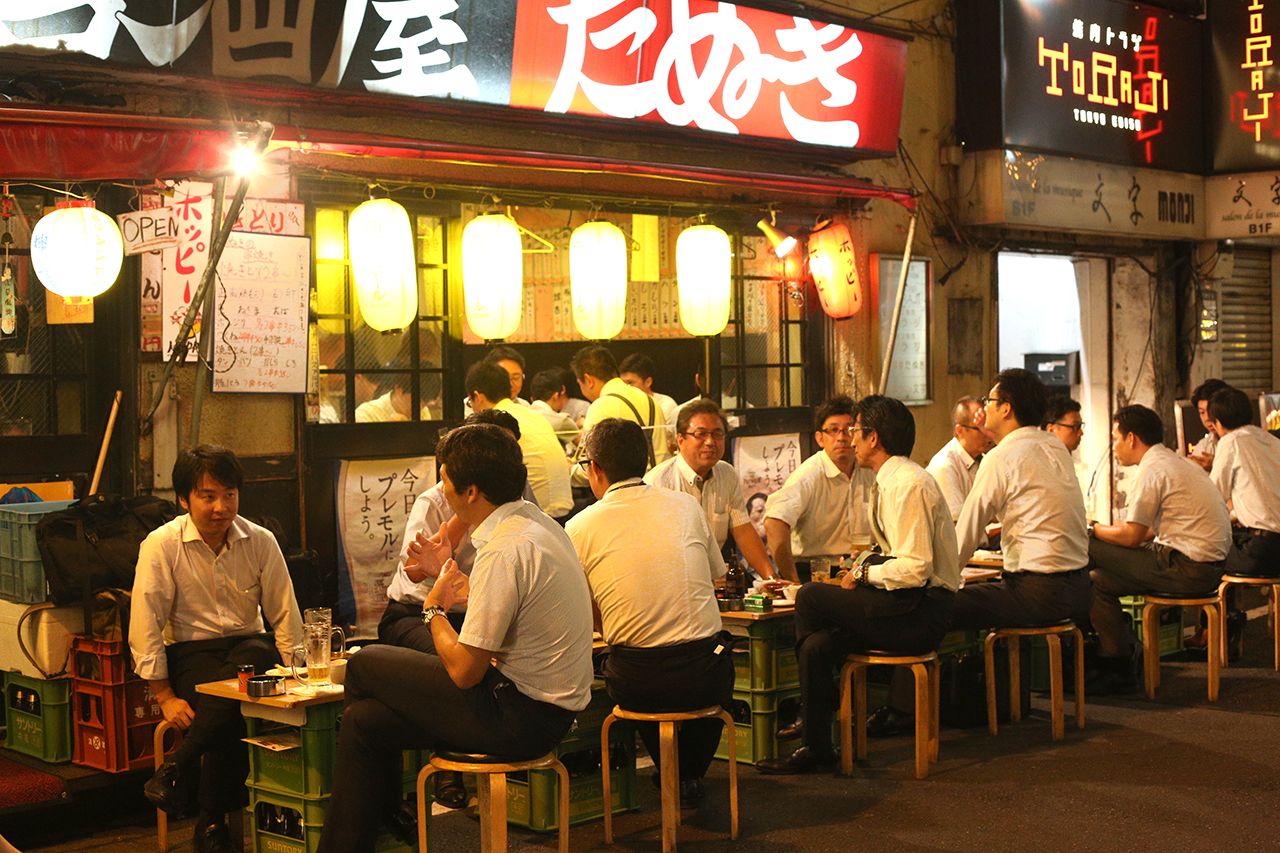

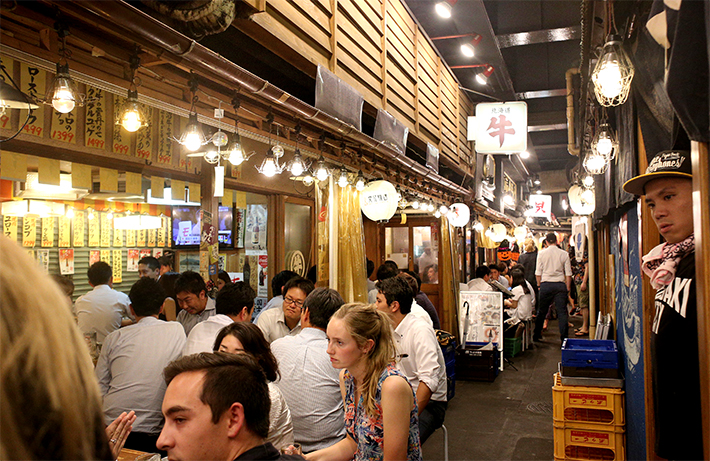
No Comments